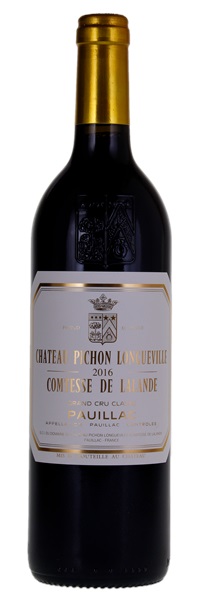Estimate


Perfect balance and thrilling intensity as well as heavenly aromatics of crème de cassis, leafy herbs, jammy blackberries, tobacco leaf.... Possessing a deep, full-bodied, singular character, the purity of fruit that's the hallmark of the vintage
A core of crushed blackcurrants, blueberry compote and black raspberries with nuances of cinnamon stick, violets, star anise...Medium-bodied and super intense in the mouth, the palate bursts with black fruits and savory layers
Saturated with dark currant, fig and blackberry compote flavors, this has a fleshy, nearly glycerin feel at first before stretching out to reveal singed cedar, tobacco leaf, dark earth and cassis bush flavors.

Perfect balance and thrilling intensity as well as heavenly aromatics of crème de cassis, leafy herbs, jammy blackberries, tobacco leaf.... Possessing a deep, full-bodied, singular character, the purity of fruit that's the hallmark of the vintage
A core of crushed blackcurrants, blueberry compote and black raspberries with nuances of cinnamon stick, violets, star anise...Medium-bodied and super intense in the mouth, the palate bursts with black fruits and savory layers
Saturated with dark currant, fig and blackberry compote flavors, this has a fleshy, nearly glycerin feel at first before stretching out to reveal singed cedar, tobacco leaf, dark earth and cassis bush flavors.

Perfect balance and thrilling intensity as well as heavenly aromatics of crème de cassis, leafy herbs, jammy blackberries, tobacco leaf.... Possessing a deep, full-bodied, singular character, the purity of fruit that's the hallmark of the vintage
A core of crushed blackcurrants, blueberry compote and black raspberries with nuances of cinnamon stick, violets, star anise...Medium-bodied and super intense in the mouth, the palate bursts with black fruits and savory layers
Saturated with dark currant, fig and blackberry compote flavors, this has a fleshy, nearly glycerin feel at first before stretching out to reveal singed cedar, tobacco leaf, dark earth and cassis bush flavors.

Perfect balance and thrilling intensity as well as heavenly aromatics of crème de cassis, leafy herbs, jammy blackberries, tobacco leaf.... Possessing a deep, full-bodied, singular character, the purity of fruit that's the hallmark of the vintage
A core of crushed blackcurrants, blueberry compote and black raspberries with nuances of cinnamon stick, violets, star anise...Medium-bodied and super intense in the mouth, the palate bursts with black fruits and savory layers
Saturated with dark currant, fig and blackberry compote flavors, this has a fleshy, nearly glycerin feel at first before stretching out to reveal singed cedar, tobacco leaf, dark earth and cassis bush flavors.

Perfect balance and thrilling intensity as well as heavenly aromatics of crème de cassis, leafy herbs, jammy blackberries, tobacco leaf.... Possessing a deep, full-bodied, singular character, the purity of fruit that's the hallmark of the vintage
A core of crushed blackcurrants, blueberry compote and black raspberries with nuances of cinnamon stick, violets, star anise...Medium-bodied and super intense in the mouth, the palate bursts with black fruits and savory layers
Saturated with dark currant, fig and blackberry compote flavors, this has a fleshy, nearly glycerin feel at first before stretching out to reveal singed cedar, tobacco leaf, dark earth and cassis bush flavors.